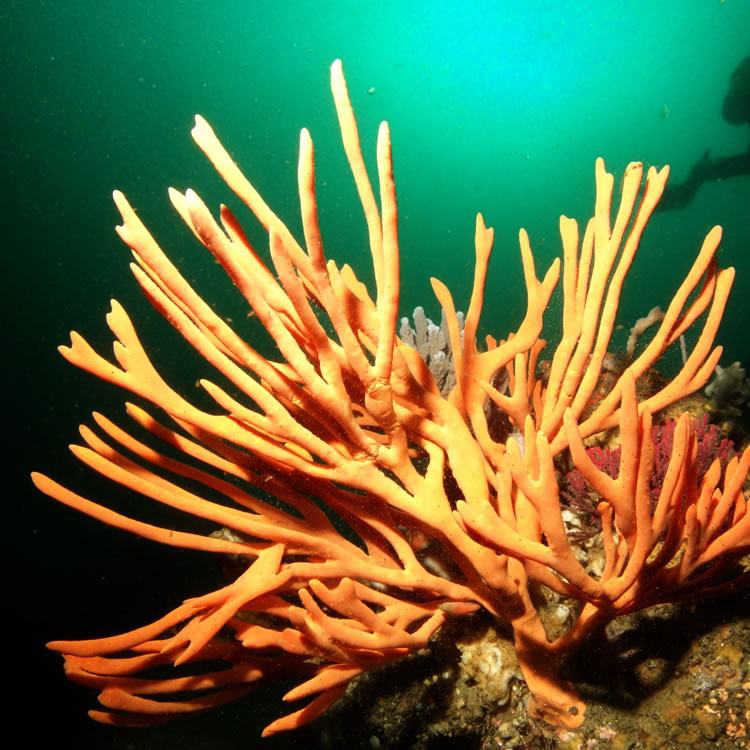Finger sponge

Community type
Habitat type
Rocky reefs, kelp beds and inter-tidal zone
Sponges are often confused with plants, but they are actually animals, but have no muscles, nerves or organs! Instead, they are made up of a combination of living cells and a stiff jelly-like substance known as ‘mesohyl’.
There is a wide diversity of different types of sponges around the world, and a number of different species in the Derwent Estuary. Some sponges live on the sea floor, while others attach themselves to rocks with a special tissue that resembles tree roots. Groups of sponges form gardens which are a colourful and spectacular sight. Sponge gardens also provide habitat and hunting grounds for a variety of other marine animals.
Sponges survive entirely on the movement of water through their bodies, from which they capture plankton and bacteria to eat, and absorb oxygen to breathe. Finger sponges are tall tubes, and water enters through tiny channels at the bottom and leaves through a larger hole at the top. The sponge can control how quickly the water moves by beating tiny internal hairs known as flagella. Sponges have very few predators, as most produce toxic chemicals and small splinters to defend themselves.
